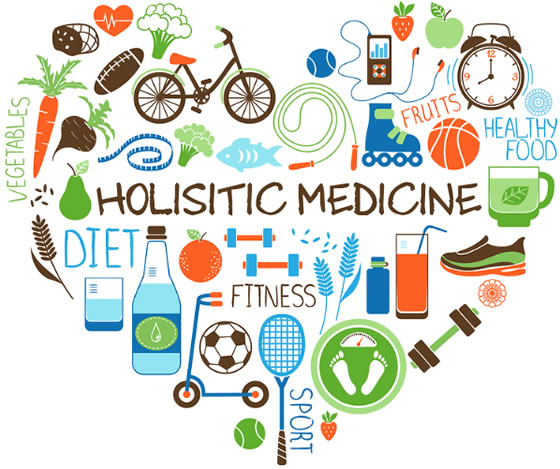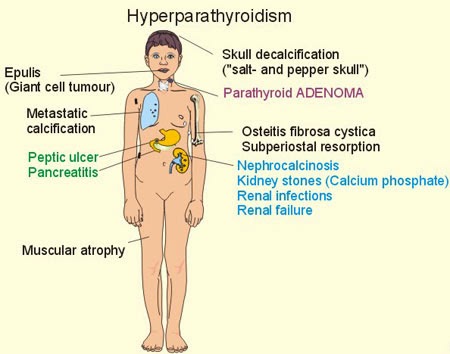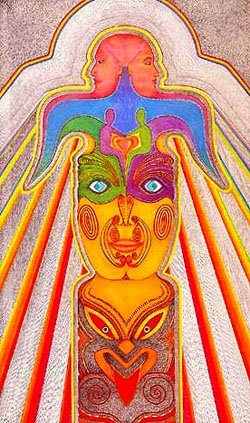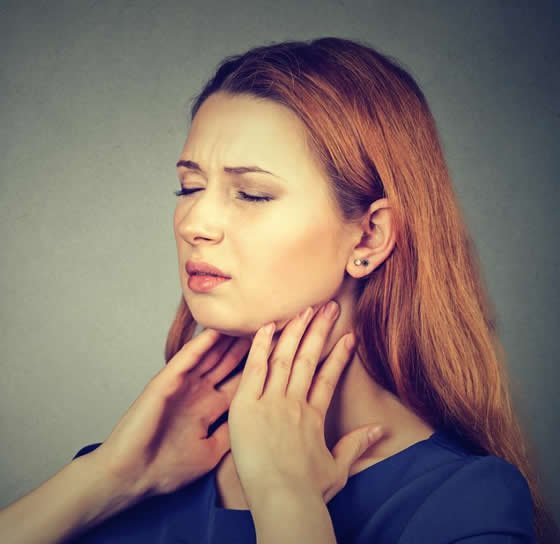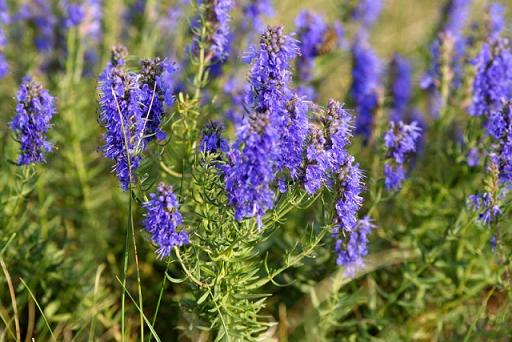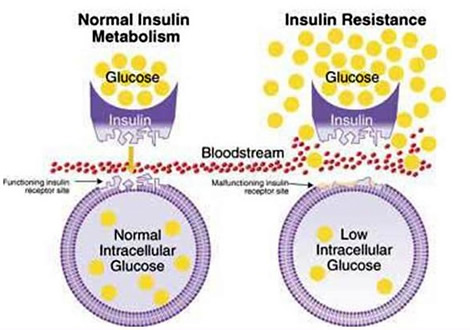Iceland Moss
Iceland moss (Cetraria islandica) is a lichen (a moss-like plant) that grows on the ground in mountains, forests, and arctic areas. In addition to Iceland, the lichen is found in Scandinavia, Great Britain, North America, Russia, and other areas in the Northern Hemisphere. Iceland moss also grows in Antarctica.
The plant’s thallus (shoot) curls from 1–4 in (2.5–10 cm) tall. The dried thallus is used as an herbal remedy. Iceland moss is also known as Iceland lichen, cetraria, fucus, muscus, and eryrngo-leaved (spiny-leaf) liverwort.
General use
Iceland moss is rich in calcium, iodine, potassium, phosphorous, and vitamins. The lichen is a bitter-tasting plant that is said to smell like seaweed when it is wet. Despite these unappetizing characteristics, Iceland moss has long been used in Scandinavia and Europe as a food source and a remedy for numerous conditions.
Ignatia
Ignatia is a homeopathic remedy that is derived from the bean of a small tree that is native to the Philippine Islands and China. The tree belongs to the Loganiaceae family, and has long, twining, smooth branches.
On the branches grows a fruit that is the size and shape of a pear. Inside the fruit are almond-shaped seeds, or beans, that have a fine, downy covering and are blackish gray or clear brown in color.
The Latin name is Ignatius amara, amara being the Latin work for bitter. The bean was named after St. Ignatius Loyola, a Spanish Jesuit who was responsible for bringing the beans to Europe from the Philippines in the seventeenth century.
Infant Massage
 |
| Infant Massage |
Infant massage refers to massage therapy as specifically applied to infants. In most cases, oil or lotion is used as it would be on an adult subject by a trained and licensed massage therapist. Medical professionals caring for infants might also use massage techniques on infants born prematurely, on those with motor or gastrointestinal problems, or on those who have been exposed to cocaine in utero.
The practice of massaging infants dates back to ancient times, particularly in Asian and Pacific Island cultures; that is, massage was a component of the baby’s regular bath routine among the Maoris and Hawaiians. Touch in these cultures is considered healthful both physically and spiritually.
In the West, however, infant massage has received more attention in recent years in conjunction with the popularity of natural childbirth and midwife-assisted births. Dr. Frédéric Leboyer, a French physician who was one of the leaders of the natural childbirth movement, helped to popularize infant massage through his photo-journalistic book on the Indian art of baby massage.
Infertility
Infertility is the failure of a couple to conceive a pregnancy after trying to do so for at least one full year. In primary infertility, pregnancy has never occurred. In secondary infertility, one or both members of the couple have previously conceived, but are unable to conceive again after a full year of trying.
Approximately 20% of couples struggle with infertility at any given time. Infertility has increased as a problem over the last 30 years. Some studies blame this increase on social phenomena, including the tendency for marriage and starting a family to occur at a later age. For women, fertility decreases with increasing age:
- Infertility in married women ages 16–20 = 4.5%.
- Infertility in married women ages 35–40 = 31.8%.
- Infertility in married women over the age of 40 = 70%.
Presently, individuals often have several sexual partners before they marry and try to have children. This increase in numbers of sexual partners has led to an increase in sexually transmitted diseases.
Hiccups
Hiccups are the result of an involuntary, spasmodic contraction of the diaphragm followed by the closing of the throat.
Virtually everyone experiences hiccups, but they rarely last long or require a doctor’s care. Occasionally, a bout of hiccups will last longer than two days, earning it the name “persistent hiccups.” Very few people will experience intractable hiccups, in which hiccups last longer than one month.
A hiccup involves the coordinated action of the diaphragm and the muscles that close off the windpipe (trachea). The diaphragm is a dome-shaped muscle separating the chest and abdomen. It is normally responsible for expanding the chest cavity for inhalation.
High-fiber Diet
 |
| High-fiber Diet |
Fiber is the material that gives plants texture and support. Dietary fiber is found in many plant foods, including fruits, vegetables, beans, nuts, and whole grains. Although fiber is primarily made up of carbohydrates, it does not have a lot of calories and usually is not broken down by the body for energy. Fiber is sometimes called roughage.
There are two types of fiber: soluble and insoluble. Insoluble fiber, as the name implies, does not dissolve in water because it contains high amounts of cellulose. Insoluble fiber is found in grain brans, fruit pulp, and vegetable peels or skins. Soluble fiber is the type of fiber that dissolves in water. It can be found in a variety of such fruits, grains, and vegetables as apples, oatmeal and oat bran, rye flour and dried beans.
Although the two types of fiber share some common characteristics such as being partially digested in the stomach and intestines and being low in calories, each type has its own specific health benefits. Insoluble fiber speeds up the movement of foods through the digestive system and adds bulk to the stools; it helps to treat constipation or diarrhea and prevents colon cancer.
High Sensitivity C-reactive Protein Test
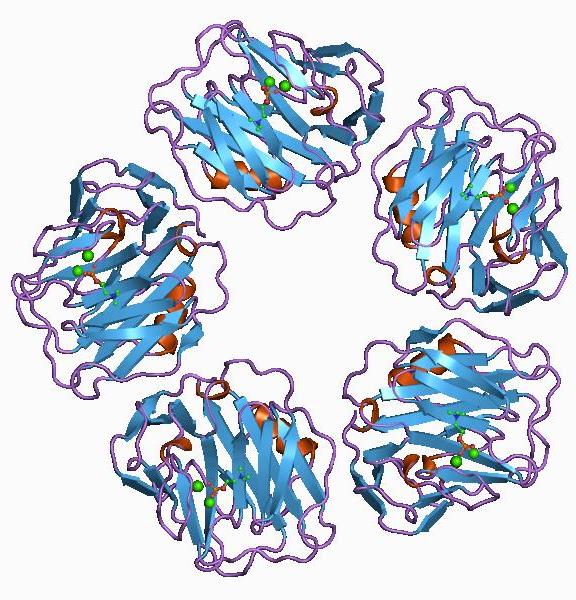 |
| C-reactive Protein |
The high sensitivity C-reactive protein (hsCRP) test is a blood assay used to estimate an individual’s risk for heart disease and stroke. The test also measures the presence of inflammation or infection.
In the late twentieth century, the primary methods of measuring a person’s risk of heart disease included traditional factors such as age, family history of heart disease or stroke, past heart disease, smoking, obesity, and tests that measured lipids in the bloodstream, including low-density lipoprotein (LDL). Low-density lipoproteins (“bad” cholesterol) were previously considered the gold standard in risk factor prediction.
In the 1990s and early twenty-first century, several new tests came into widespread use. These tests are considered better predictors of heart disease risk. They include blood tests to measure the levels of homocysteine, lipoprotein(a), fibrinogen, and highly sensitive C-reactive protein. They are called emerging or nontraditional risk factors.
Hives
 |
| Hives |
Hives are an allergic skin reaction causing localized redness, swelling, and itching.
Hives are a reaction of the body’s immune system that causes areas of the skin to swell, itch, and become reddened. (The affected areas are called wheals.) When the reaction is limited to small areas of the skin, it is called urticaria. Involvement of larger areas, such as whole sections of a limb, is called angioedema.
Causes and symptoms
Causes
Hives are an allergic reaction. The body’s immune system is normally responsible for protection from foreign invaders. When it becomes sensitized to normally harmless substances, the resulting reaction is called an allergy. An attack of hives is set off when such a substance, called an allergen, is ingested, inhaled, or otherwise contacted.
It interacts with immune cells called mast cells, which reside in the skin, airways, and digestive system. When mast cells encounter an allergen, they release histamine and other chemicals, both locally and into the bloodstream.
Hodgkin’s Disease
Hodgkin’s disease, also called Hodgkin’s lymphoma, is a type of cancer involving tissues of the lymphatic system, or lymph nodes. Its cause is unknown, although some interaction between individual genetic makeup, family history, environmental exposures, and infectious agents is suspected.
Hodgkin’s lymphoma can occur at any age, although the majority of these lymphomas occur in people aged 15–34, and over the age of 60. Lymphoma is a cancer of the lymphatic system. Depending on the specific type, a lymphoma can have any or all of the characteristics of cancer: rapid multiplication of cells, abnormal cell types, loss of normal arrangement of cells with respect to one another, and invasive ability.
Causes and symptoms
Hodgkin’s lymphoma usually begins in a lymph node. The node enlarges and—similar to enlarged lymph nodes due to infectious causes—may or may not cause any pain. Hodgkin’s lymphoma progresses in a fairly predictable way, traveling from one group of lymph nodes to another unless it is treated. More advanced cases of Hodgkin’s involve the spleen, liver, and bone marrow.
Holistic Dentistry
 |
| Holistic Dentistry |
While traditional dentistry focuses only on the areas above the neck, holistic dentistry looks at the patient as a whole system and how the mouth relates to the rest of the body.
Origins
Applying a biological concept to the practice of dentistry began in the late 1800s, when the National Dental Association recognized the harmful effects of mercury (amalgam) fillings, and mandated that members of the association not use these on their patients.
As of 1997, this warning has been recognized and acted upon by several foreign countries that have either banned the use of mercury in fillings or are in the process of doing so. Supporters of holistic dentistry state that mercury in amalgam fillings causes ill effects when placed as an implant in the body.
Holistic Medicine
Holistic medicine is a term used to describe therapies that attempt to treat the patient as a whole person. That is, instead of treating an illness, as in orthodox allopathy, holistic medicine looks at an individual’s overall physical, mental, spiritual, and emotional well-being before recommending treatment.
A practitioner with a holistic approach treats the symptoms of illness as well as looking for the underlying cause of the illness. Holistic medicine also attempts to prevent illness by placing a greater emphasis on optimizing health.
The body’s systems are seen as interdependent parts of the person’s whole being. The body’s natural state is one of health, and an illness or disease is an imbalance in the body’s systems. Holistic therapies tend to emphasize proper nutrition and avoidance of substances—such as chemicals—that pollute the body. Their techniques are noninvasive.
Homeopathy
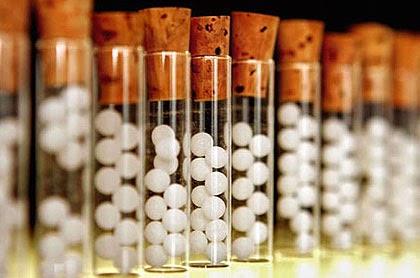 |
| Homeopathy |
Homeopathy, or homeopathic medicine, is a holistic system of treatment that originated in the late eighteenth century. The name homeopathy is derived from two Greek words that mean “like disease.”
The system is based on the idea that substances that produce symptoms of sickness in healthy people will have a curative effect when given in very dilute quantities to sick people who exhibit those same symptoms.
Homeopathic remedies are believed to stimulate the body’s own healing processes. Homeopaths use the term “allopathy,” or “different disease,” to describe the use of drugs used in conventional medicine to oppose or counteract the symptom being treated.
Acute Homeopathic Prescribing
 |
| Acute Homeopathic Prescribing |
Acute homeopathic prescribing is that part of homeopathy that treats illness of abrupt onset requiring immediate attention. In homeopathic medicine, acute refers primarily to the speed of onset and selflimiting character of the disorder rather than its seriousness.
Colds, influenza, sore throats, insect stings, cuts, bruises, vomiting, diarrhea, fever, muscle aches, and short-term insomnia are all examples of conditions that are treated by acute prescribing. The remedies given in acute homeopathic prescribing are intended to stimulate the body’s internal ability to heal itself; they do not kill germs or suppress symptoms.
Acute prescribing can be done—within limits—by patients at home, as well as by homeopathic practitioners. Study courses, self-treatment guides, and homeopathic home medicine kits are now available by mail order from homeopathic pharmacies and educational services.
Constitutional Homeopathic Prescribing
 |
| Constitutional Homeopathic Prescribing |
Constitutional homeopathic prescribing, also called classical prescribing, is a holistic system of medicine that has been practiced for more than 200 years. Unlike acute homeopathic prescribing, constitutional prescribing refers to the selection and administration of homeopathic preparations over a period of time for treatment related to what practitioners call miasmic disorders, those caused by an inherited predisposition to a disease.
The term miasm comes from a Greek word meaning stain or pollution. As in acute prescribing, constitutional prescribing is holistic in that it is intended to treat the patient on the emotional and spiritual levels of his or her being as well as the physical. Constitutional prescribing is also aimed at eventual cure of the patient, not just suppression or relief of immediate symptoms.
Homeopathy was developed during the 1790s by Samuel Hahnemann, a German physician. Experimenting on himself with the anti-malarial drug quinine, Hahnemann noticed that large doses of the medicine actually caused malaria-like symptoms, while smaller doses cured the symptoms.
Honeysuckle
Honeysuckle is a large, volubilate shrub of the genus Lonicera. There are over 300 species of honeysuckle in the Caprifoliaceae family, found from Asia to North America. The shrub reaches heights of 20–30 ft (6–9 m), with thin, hairy branches. It has ovoid leaves that range 1.2–3.2 in (3–8 cm) long by 0.6–1.6 in (1.5–4.0 cm) wide. The plant flowers in late spring or early summer, depending on the species.
Japanese honeysuckle (Lonicera japonica) blooms in the spring from April to May, with fragrant white flowers touched with a shade of purple that fade to yellow as they mature. The species of honeysuckle that is found in North America, the United Kingdom, and western Asia, Lonicera caprifolium, flowers in June.
Generally, honeysuckle flowers are 1.2–1.6 in (3–4) cm long, with an inner tube of approximately the same length. All varieties of honeysuckle are famous for this tube, which is extracted and sucked for its sweet nectar.
Hops
Hops come from the large perennial vine Humulus lupulus. This plant is native to North America and Europe, but is cultivated in many other places. The vine grows to a height of 25 ft (8 m). It has heart-shaped dark green leaves and yellowish green flowers. Each plant produces either male or female flowers. Only the female flowers, called strobiles, are used medicinally. Strobiles are picked in autumn and either used fresh or dried.
General use
Hops have been cultivated to be used in the brewing of beer since at least A. D. 1000, but they also have a mixed history of use in healing. Ancient Hebrews used hops to help ward off plague. In North America, several Native American tribes independently discovered the healing properties of hops and used them as a sedative and sleep aid, to relieve toothache, and to improve digestion.
By the end of the 1800s, hops were being routinely used in mainstream medicine in the United States as a sedative and digestive tonic. Although hops were sometimes used as a sleep aid in Europe, until relatively recently their major use in Europe was in the brewing of beer, to which they add a bitter flavor and act as a preservative.
Horehound
Horehound (Marrubium vulgare L.), commonly known as white horehound, is a European native of the Lamiaciae or mint family. Other names for this ancient remedy include houndsbane, marrubium, eye of the star, seed of Horus, marvel, bulls’ blood, and houndsbane. Horehound is a hardy perennial that has naturalized throughout North America; it may be found in sunny, wayside places, thriving even in poor, dry soil.
The common name horehound comes from the Old English words har and hune, meaning downy plant. This descriptive name refers to the white hairs that give this herb its distinctive hoary appearance. Another suggested derivation is from the name of the Egyptian god of sky and light, Horus.
Horehound is one of the oldest known cough remedies. It was one of the herbs in the medicine chests of the Egyptian pharaohs. In Roman times, Caesar’s antidote for poison included horehound. The generic name is believed to be derived from the Hebrew word marrob, meaning bitter juice.
Horse Chestnut
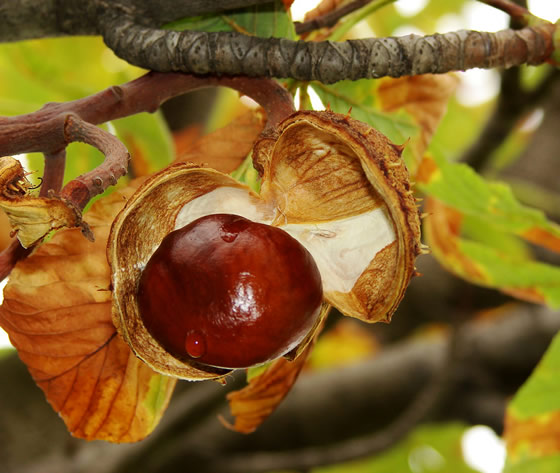 |
| Horse Chestnut |
The European horse chestnut, Aesculus hippocastanum, is the horse chestnut most frequently used in herbal medicine. It is a member of the Hippocastanaceae family. Horse chestnuts are in an entirely different botanical family from the well-known sweet chestnut tree, Castanea vesca. Horse chestnuts exist in nature as both a tree and a shrub, and are found in all temperate regions of Europe, Asia, and North America.
There are 15 recognized species of horse chestnut. The European horse chestnut is believed to have originated in the Balkan region of eastern Europe but is now grown in every country in the Northern Hemisphere.
The name Aesculus is actually a misnomer, coming originally from the word esca, meaning food. It was applied by ancient peoples to a certain species of oak; somehow the name was transferred over the years to the horse chestnut.
Horsetail
 |
| field horsetail (Equisetum arvense) |
Horsetail is a perennial plant that is found in or near watery areas such as marshes, streams, or rivers. Horsetail grows in temperate northern hemisphere areas of Asia, Europe, North America, and North Africa. It flourishes where it can root in water or clay soil.
Horsetail is a derivative of larger plants that grew 270 million years ago during the carboniferous period. It belongs to the Equisetaceae family and is a relative of the fern.
There are over 20 species of horsetail. The species most commonly used medicinally is field horsetail (Equisetum arvense). E. arvense grows up to 1.5 ft (0.5 m) in corn fields and wet meadows. Wood horsetail (E. sylvaticum) grows in copses and on hedgebanks, usually to a height of 1-2 ft (0.3-0.6 m).
Hot Flashes
 |
| Hot Flashes |
Hot flashes, experienced by large numbers of women and some men as a result of surgical, chemical, or age-induced changes in estrogen levels, are characterized by a rapid rise and discharge of heat with perspiration, discomfort, and possible redness.
Ranging from mild to severe in intensity, they may be preceded by an “aura-like” experience, and may be followed by a subsequent feeling of chill. With natural age-related menopause, hot flashes may begin as early as two years prior to the cessation of menses and continue as long as five or more years afterward. Statistically, the average experience is approximately four years of hot flashes of varying intensities.
Approximately 20% of women without breast cancer and 50–75% of women taking tamoxifen subsequent to breast cancer will reportedly seek a doctor’s advice for the management of hot flashes.
Hydrotherapy
Hydrotherapy, or water therapy, is the use of water (hot, cold, steam, or ice) to relieve discomfort and promote physical well-being.
The therapeutic use of water has a long history. Ruins of an ancient bath were unearthed in Pakistan and date as far back as 4500 B.C. Bathhouses were an essential part of ancient Roman culture. The use of steam, baths, and aromatic massage to promote well being is documented since the first century. Roman physicians Galen and Celsus wrote of treating patients with warm and cold baths in order to prevent disease.
By the seventeenth and eighteenth centuries, bathhouses were extremely popular with the public throughout Europe. Public bathhouses made their first American appearance in the mid 1700s.
Hypercortisolemia
 |
| Hypercortisolemia |
Cortisol is an essential glucocorticoid hormone, a subgroup of steroid hormones, the major hormone secreted by the adrenal glands. Hormones are messenger substances, substances produced in one gland or area of the body that move through the blood and stimulate activity in other glands or areas.
Glucocorticoid hormones affect carbohydrate and protein metabolism. Steroid hormones are hormones related to cholesterol. Hypercortisolemia refers to high amounts of circulating cortisol and may be a pathological or non-pathological condition.
Pathological hypercortisolemia, or Cushing’s syndrome, named after the United States surgeon, Harvey Cushing (1869–1939), may result from a lung cancer, tumor of the pituitary or adrenal glands, or from kidney failure.
Hypertension
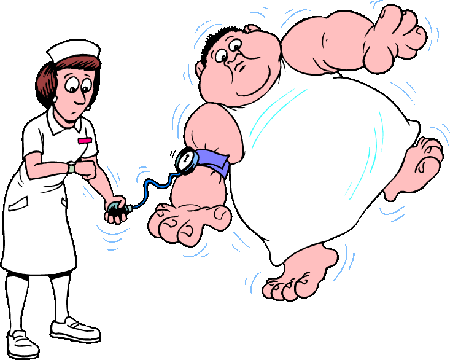 |
| Hypertension |
Hypertension is the medical term for high blood pressure. Blood pressure is the force of blood pushing against the walls of arteries as it flows through them. Arteries are the blood vessels that carry oxygenated blood from the heart to the body’s tissues.
As blood flows through arteries, it pushes against the inside of the artery walls. The more pressure the blood exerts on the artery walls, the higher the blood pressure. The size of small arteries also affects the blood pressure.
When the muscular walls of arteries are relaxed, or dilated, the pressure of the blood flowing through them is lower than when the artery walls are narrow, or constricted.
Hypnotherapy
 |
| Hypnotherapy |
Hypnotherapy is the treatment of a variety of health conditions by hypnotism or by inducing prolonged sleep.
Hypnotherapy is thought to date back to the healing practices of ancient Greece and Egypt. Many religions such as Judaism, Christianity, Islam, and others have attributed trance-like behavior to spiritual or divine possession.
An Austrian physician, Franz Mesmer (1734–1815), is credited with being the first person to scientifically investigate the idea of hypnotherapy in 1779 to treat a variety of health conditions. Mesmer studied medicine at the University of Vienna and received his medical degree in 1766.
Hyperparathyroidism
Hyperparathyroidism is the overproduction by the parathyroid glands of a hormone called parathyroid hormone (parathormone). Parathyroid glands are four pea-sized glands located just behind the thyroid gland in the front of the neck. Parathyroid hormone (parathormone) helps regulate the levels of calcium and phosphorus in the body.
Thyroid glands and parathyroid glands, despite their similar names and proximity, are entirely separate, and each produces hormones with different functions.
Hyperparathyroidism may be primary or secondary. It most often occurs in patients over age 30, and most commonly in patients 50 to 60 years old. It rarely occurs in children or the elderly. Women are affected by the disease up to three times more often than men. It is estimat- ed that 28 of every 100,000 people in the United States will develop hyperparathyroidism each year.
Hyperthermia
Hyperthermia involves raising the body’s core temperature as a means of eradicating tumors. The treatment simulates fever. Some therapies actually bring on fever through the introduction of fever-causing organisms, while others raise body temperature by directly heating the blood.
Hyperthermia dates back to investigations begun in 1883 by William B. Coley, M.D., a general surgeon at New York City’s Memorial Hospital. Coley was intrigued by a paper published in 1868 by an American family physician named Busch. Busch’s paper described a patient with an untreatable sarcoma of the face.
Though Busch had been unable to help the patient overcome her cancer, the patient went into remission spontaneously after suffering a bout of the skin infection known as erysipelas. The erysipelas resulted in a high fever ranging from 104°F to 105.8°F (40°C to 41°C).
Huna
Huna is an esoteric Polynesian psychology that claims to use the powers of the mind to accomplish healing and spiritual development. Max Freedom Long, who rediscovered Huna in the 1920s, defined it as a system of religious psychiatry because it contains elements of religion, psychology, and psychic science.
Huna practitioners believe their teachings are ancient and sacred, although at least one writer has claimed they actually have modern origins. In the Hawaiian language, the word huna means “secret” or “that which is hidden,” referring to a tradition of hiding these teachings.
The word is also said to be taken from kahuna,a priest or teacher who was the “keeper of the secret.” Huna has traditionally been passed on through oral communication and in chants rather than in writing.
Huna was outlawed in the nineteenth century by Christian missionaries to the Hawaiian Islands. Max Freedom Long, who founded the Huna Fellowship in 1945, spent years decoding the language of Huna knowledge. He published eight books on Huna between the 1920s and his death in 1971. Serge Kahili King, a non-Polynesian kahuna, founded One Order of Huna International in 1973.
Huna practitioners believe their teachings are ancient and sacred, although at least one writer has claimed they actually have modern origins. In the Hawaiian language, the word huna means “secret” or “that which is hidden,” referring to a tradition of hiding these teachings.
The word is also said to be taken from kahuna,a priest or teacher who was the “keeper of the secret.” Huna has traditionally been passed on through oral communication and in chants rather than in writing.
Huna was outlawed in the nineteenth century by Christian missionaries to the Hawaiian Islands. Max Freedom Long, who founded the Huna Fellowship in 1945, spent years decoding the language of Huna knowledge. He published eight books on Huna between the 1920s and his death in 1971. Serge Kahili King, a non-Polynesian kahuna, founded One Order of Huna International in 1973.
Humor Therapy
Humor therapy is the art of using humor and laughter to help heal people with physical or mental illness.
The benefits of humor therapy were acknowledged as far back as the book of Proverbs in the Old Testament, which contains verses like Prov. 17:22: “A cheerful heart is a good medicine, but a downcast spirit dries up the bones.”
The earliest historical reference to humor therapy is from the fourteenth century, when French surgeon Henri de Mondeville wrote, “Let the surgeon take care to regulate the whole regimen of the patient’s life for joy and happiness, allowing his relatives and special friends to cheer him, and by having someone tell him jokes.”
Hypothyroidism
Hypothyroidism, or a condition of insufficient thyroid hormone in the body, develops when the thyroid gland fails to produce or secrete as much thyroxine (T4) and triiodothyronine (T3) as the body needs.
Because T4 regulates such essential functions as heart rate, digestion, physical growth, and mental development, an insufficiency of this hormone can slow life-sustaining processes, damage organs and tissues in every part of the body, and lead to life-threatening complications.
Hypothyroidism is one of the most common chronic diseases in the United States. Symptoms may not appear until years after the thyroid has stopped functioning, and they are often mistaken for signs of other illnesses, menopause, or aging. Although this condition is believed to affect as many as 11 million adults and children, as many as two of every three people with hypothyroidism may not know they have the disease.
Hyssop
Hyssop (Hyssopus officinalis) is a member of the Lamiaceae or mint family. This aromatic evergreen, classified by botanists as a sub-shrub, should not be confused with several distinct species of plants also called hyssop, including giant hyssop, hedge hyssop, prairie hyssop, or wild hyssop.
Hyssop is native to southern Europe and Asia. The London surgeon and apothecary John Gerard, author of the Herball or Generall Historie of Plantes, brought hyssop to England in 1597.
The attractive herb soon became a component in many ornamental knot gardens. The sun-loving hyssop has naturalized throughout North America, and grows wild in chalky soil and on dry and rocky slopes in the Mediterranean.
Hypoglycemia
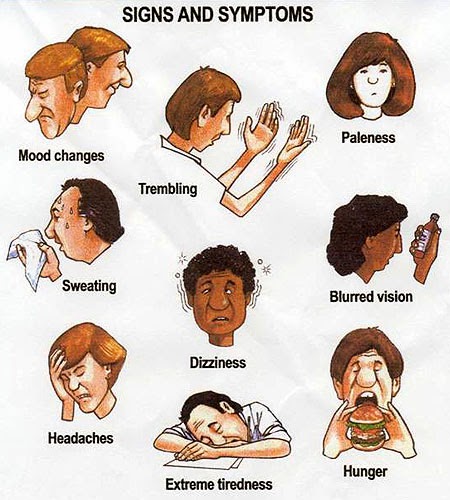 |
| Hypoglycemia |
The condition called hypoglycemia is literally translated as low blood sugar. Hypoglycemia occurs when blood sugar (or blood glucose) concentrations fall below a level necessary to properly support the body’s need for energy and stability throughout its cells.
Carbohydrates are the main dietary source of the glucose that is manufactured in the liver and absorbed into the bloodstream to fuel the body’s cells and organs. Glucose concentration is controlled by hormones, primarily insulin and glucagon. Glucose concentration is also controlled by epinephrine (adrenalin) and norepinephrine, as well as growth hormone.
If these regulators are not working properly, levels of blood sugar can become either excessive (as in hyperglycemia) or inadequate (as in hypoglycemia). If a person has a blood sugar level of 50 mg/dl or less, he or she is considered hypoglycemic, although glucose levels vary widely from one person to another.
Hypoglycemia can occur in several ways.
Hypothermia
The sustained loss of body heat resulting in low body temperature. Hypothermia occurs with extended exposure to cold external temperatures. Cool, wet conditions may also result in hypothermia.
The key symptom of mild hypothermia, in which body temperature is no lower than 95ºF, is intense shivering. Attempt to warm the person getting him or her into a warm location, removing wet clothing and wrapping in warm blankets, and offering warm fluids to drink.
When body temperature drops below 95ºF in moderate hypothermia, the body loses the ability to shiver and the rate of heat loss increases. hearth rate slows, blood pressure drops, and metabolism slows.
Indigestion
 |
| Indigestion |
Indigestion, which is sometimes called dyspepsia, is a general term covering a group of nonspecific symptoms in the digestive tract. It is often described as a feeling of fullness, bloating, nausea, heartburn, or gassy discomfort in the chest or abdomen. The symptoms develop during meals or shortly afterward. In most cases, indigestion is a minor problem that often clears up without professional treatment.
Indigestion or dyspepsia is a widespread condition, estimated to occur in 25% of the adult population of the United States. Most people with indigestion do not feel sick enough to see a doctor; nonetheless, it is a common reason for office visits. About 3% of visits to primary care doctors are for indigestion.
Causes and symptoms
Physical causes
The symptoms associated with indigestion have a variety of possible physical causes, ranging from commonplace food items to serious systemic disorders:
Diet. Milk, milk products, alcoholic beverages, tea, and coffee cause indigestion in some people because they stimulate the stomach’s production of acid.
Impetigo
 |
| Impetigo |
Impetigo is a contagious bacterial infection of the skin. It primarily afflicts children and the elderly. Ecthyma is a more severe form of impetigo with sores affecting a deeper layer of the skin. It often leaves scarring and discoloration of the skin.
The first sign of impetigo is a clear, fluid-filled bump, called a vesicle, which appears on the skin. The vesicle soon dries out and develops a scab-like, honey-colored crust, which breaks open and leaks fluid. These vesicles usually appear grouped closely together, and they may spread out and cover a large area of the skin.
Impetigo often affects the area around the nose and mouth; however, it can spread to anywhere on the skin, but especially the arms and legs, as well as the diaper areas of infants. The condition called ecthyma is a form of impetigo in which the sores that develop are larger, filled with pus, and covered with brownish-black scabs that may lead to scarring. Impetigo infections most commonly occur during warmer weather.
Impotence
 |
| Impotence |
Impotence, also known as erectile dysfunction, is the inability to achieve or maintain an erection long enough to engage in sexual intercourse.
Under normal circumstances, when a man is sexually stimulated, his brain sends a message down the spinal cord and into the nerves of the penis. The nerve endings in the penis release chemical messengers, called neurotransmitters, that signal the arteries that supply blood to the corpora cavernosa (the two spongy rods of tissue that span the length of the penis) to relax and fill with blood.
As they expand, the corpora cavernosa close off other veins that would normally drain blood from the penis. As the penis becomes engorged with blood, it enlarges and stiffens, causing an erection. Problems with blood vessels, nerves, or tissues of the penis can interfere with an erection.
Inflammatory Bowel Disease
Inflammatory bowel disease (IBD) is the general name for ulcerative colitis and Crohn’s disease. The disease is characterized by swelling, ulcerations, and loss of function of the intestines.
The primary problem in IBD is inflammation, as the name suggests. Inflammation is a process that often occurs to fight off foreign invaders in the body, including viruses, bacteria, and fungi. In response to such organisms, the body’s immune system begins to produce a variety of cells and chemicals intended to stop the invasion.
These immune cells and chemicals, however, also have direct effects on the body’s tissues, resulting in heat, redness, swelling, and loss of function. No one knows what starts the cycle of inflammation in IBD, but the result is a swollen, boggy intestine.
  |
Infections
 |
| Infections |
An infection is a condition in which viruses, bacteria, fungi, or parasites enter the body and cause a state of disease. Such invaders are called pathogens. They damage cells of the body by adhering to and damaging the cell walls, releasing toxic substances or causing allergic reactions.
The body has a set series of responses to infection, which mostly involve body chemicals, body tissues, and the immune system. It was recently reported that infection is the fourth leading cause of death in the United States and kills more people than cancer and heart disease combined.
Pathogens are everywhere in a person’s daily environment: They may enter the body through breathing, ingested food or water, sexual contact, open wounds, or contact with contaminated objects. Having entered the body, pathogens begin to reproduce.
Influenza
 |
| Kid with influenza |
Usually referred to as the flu or grippe, influenza is a highly infectious respiratory disease. Its name comes from the Italian word for “influence,” because people in eighteenth-century Europe thought that the disease was caused by the influence of bad weather. We now know that flu is caused by a virus.
When the influenza virus is inhaled, it attacks cells in the upper respiratory tract, causing such typical flu symptoms as fatigue, fever and chills, a hacking cough, and body aches. Although the stomach or intestinal “flu” is commonly blamed for stomach upsets and diarrhea, the influenza virus affects humans less often than is commonly believed.
Influenza is considerably more debilitating than the common cold. Influenza outbreaks occur suddenly, and infection spreads rapidly. The annual death toll attributable to influenza and its complications averages 20,000 in the United States alone. In the 1918-1919 Spanish flu pandemic, the death toll reached a staggering 20–40 million worldwide. Approximately 500,000 of these fatalities occurred in North America.
Ingrown Nail
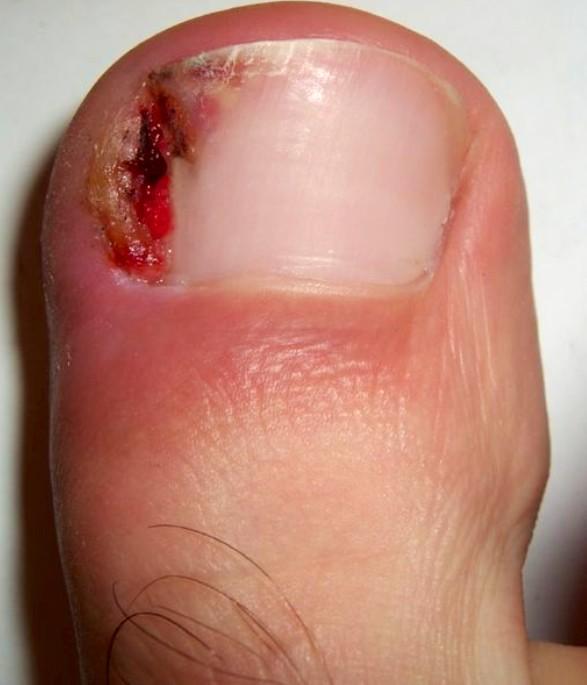 |
| Ingrown Nail |
Ingrown nail refers to the condition in which the edge of a nail cuts into the adjacent skin fold, causing pain, redness, and swelling.
Ingrown nail (onychocryptosis) occurs when the nail plate (the horny covering) grows into and cuts the skin alongside the nail (lateral nail fold). Ingrown toenails make up 3–5% of all foot problems. Most cases of ingrown nail occur in men between the ages of 10–30 years.
In this age group, males are affected twice as often as females. In older adults, the incidence is equal. There are three major types of ingrown nail: subcutaneous ingrown nail, in which the nail grows under the skin; over-curvature of the nail plate; and hypertrophy (overgrowth) of the lateral nail fold.
Insomnia
 |
| Insomnia |
Insomnia is the inability to obtain an adequate amount or quality of sleep. The difficulty can be in falling asleep, remaining asleep, or both. People with insomnia do not feel refreshed when they wake up. Insomnia is a common symptom affecting millions of people that may be caused by many conditions, diseases, or circumstances.
According to a 1999 American Medical Association (AMA) report, approximately 30% of adults in the United States suffer occasionally from insomnia and 10% experience chronic insomnia.
Sleep is essential for mental and physical restoration. It is a cycle with two separate states: rapid eye movement (REM), the stage in which most dreaming occurs; and non-REM (NREM).
Insulin Resistance
Insulin resistance is a condition in which cells, particularly those of muscle, fat, and liver tissue, display “resistance” to insulin by failing to take up and utilize glucose for energy and metabolism (insulin normally promotes take up and utilization of blood glucose from the blood stream).
In its early stages, the condition is asymptomatic, but may develop into Type II Diabetes. Although there are several established risk factors, the underlying cause is unknown.
It has been estimated that 30 to 33 million Americans are insulin resistant, and the number appears to be increasing.
Iodine
 |
| Iodine |
Iodine is a trace mineral required for human life. Humans require iodine for proper physical and mental development. It impacts cell respiration, metabolism of energy and nutrients, functioning of nerves and muscles, differentiation of the fetus, growth and repair of tissues, and the condition of skin, hair, teeth, and nails.
Iodine is also needed for the production of thyroid hormones. The thyroid (a small gland in the front of the neck), which contains 80% of the body’s iodine pool, converts iodine into the thyroid hormones thyroxine (T4) and triiodothyronine (T3). These hormones are released into the bloodstream, controlling the body’s metabolism.
General use
As established by the National Research Council’s Food and Nutrition Board, the revised 1989 Recommended Dietary Allowance (RDA) for iodine is 40 mcg for infants, increasing to 150 mcg for adults and children age 11 and older. The RDA for pregnant and lactating women increases to 175 and 200 mcg respectively.
Ipecac
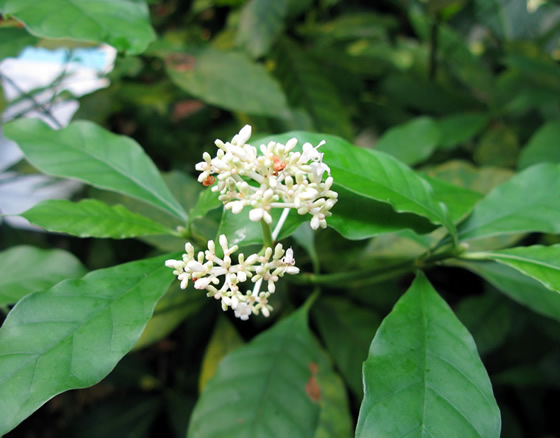 |
| Ipecac (Cephalis ipecacuanha) |
There are two categories of ipecac preparations— a syrup used in standard medical practice and a homeopathic remedy. They are given for different purposes. The medicinal effects of ipecac were recognized centuries ago by the Portuguese who settled in South America.
They found a plant that can make people vomit and appropriately named it Cephalis ipecacuanha, meaning sick-making plant. Nowadays, ipecac is used to treat a variety of conditions. Its most widely accepted use is to induce vomiting in cases of accidental poisoning.
When ipecac is swallowed, a substance in it called cephaeline irritates the stomach and causes vomiting. Syrup of ipecac is now considered the safest drug to treat poisoning and is often the most effective.
Ipriflavone
 |
| Ipriflavone |
Ipriflavone (IP), also called ipraflavone, is a massproduced synthetic derivative of genistein (genistin) or daidzein. Genistein and daidzein are unique plant compounds called isoflavones, which are primarily found in soy products. Isoflavones belong to a larger category known as flavonoids, which are natural plant components that have antioxidant, anti-inflammatory, anti-allergy, and anticancer properties.
Although most soy isoflavones are classified as plant estrogens (phytoestrogens), ipriflavone does not have estrogenic activity, and does not activate any estrogen receptors in the body. However, it may prevent or treat bone loss—osteoporosis—associated with menopause (the cessation of menstruation) and aging.
Ipriflavone contains three carbon rings. Its chemical names are:
- 7-isopropoxyisoflavone
- 7-isopropoxy-3-phenyl-4H-1-benzopyran-4-one
- 7-(1-methylethoxy)-3-phenyl-4H-1-benzopyran-4-one
- 7-isopropoxy-3-phenylchromone
Iridology
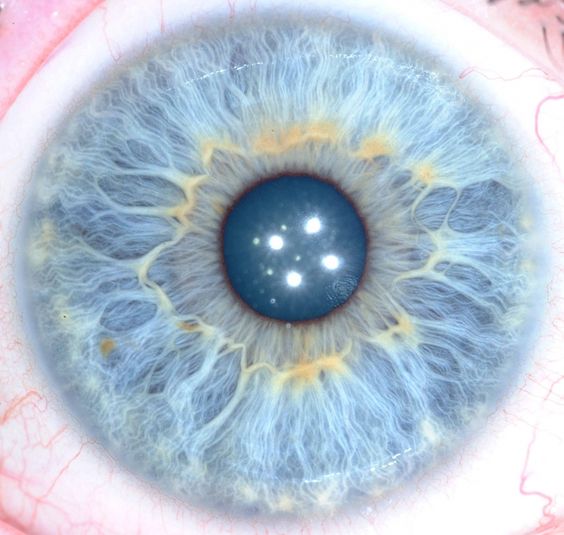 |
| Iridology |
Iridology, also called iris analysis or iris diagnosis, is the study of the iris (the colored part of the eye). Iris “readings” are made by iridologists to assess a person’s health picture (physical, emotional, mental, and spiritual) and guide them to take measures to improve their health.
The basic concept of iridology has existed for centuries. The medical school of the University of Salerno in Italy offered training in iris diagnosis. A book published by Philippus Meyers in 1670, called Chiromatica medica, noted that signs in the iris indicate diseases.
Dr. Ignatz von Peczely, however, is generally considered the father of iridology, with the date of his discovery given as 1861. Von Peczely was a Hungarian physician. As a child, he accidentally broke an owl’s leg. He observed that a black line formed in the owl’s lower iris at the time of the injury.
Iron
Iron is a mineral that the human body uses to produce the red blood cells (hemoglobin) that carry oxygen throughout the body. It is also stored in myoglobin, an oxygen-carrying protein in the muscles that fuels cell growth.
Iron is abundant in red meats, vegetables, and other foods, and a well-balanced diet can usually provide an adequate supply of the mineral. But when there is insufficient iron from dietary sources, or as a result of blood loss in the body, the amount of hemoglobin in the bloodstream is reduced and oxygen cannot be efficiently transported to tissues and organs throughout the body.
The resulting condition is known as iron-deficiency anemia, and is characterized by fatigue, shortness of breath, pale skin, concentration problems, dizziness, a weakened immune system, and energy loss.
Subscribe to:
Posts (Atom)





